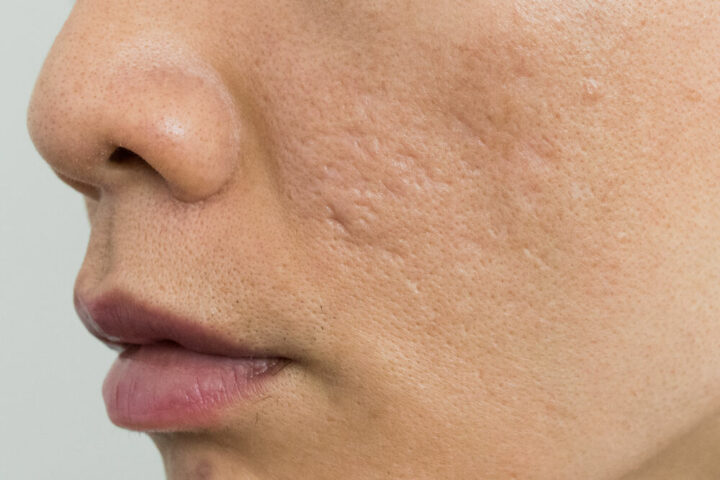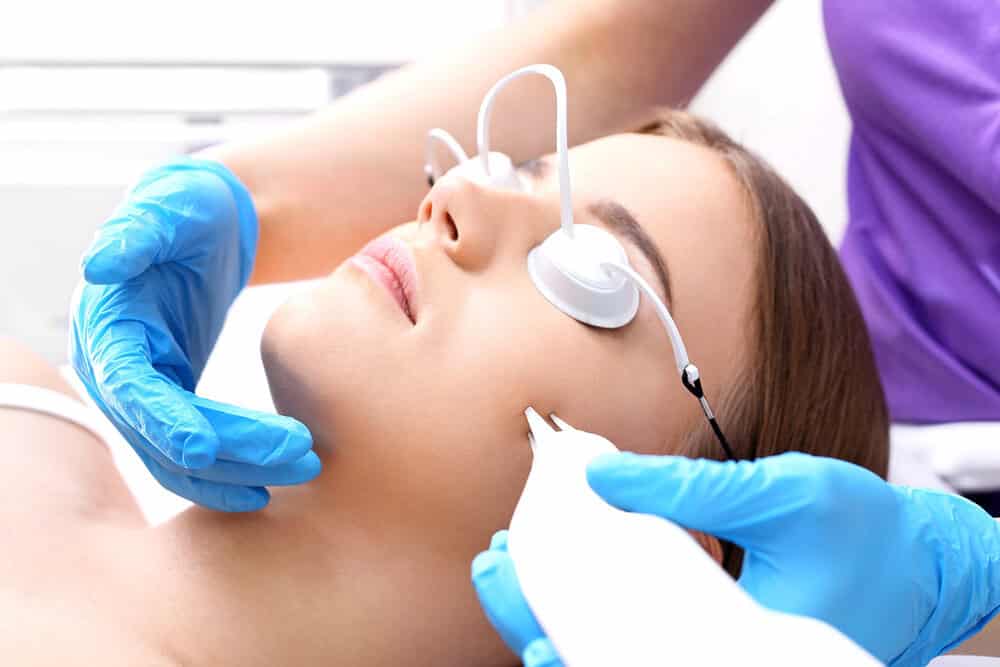
7 Effective Acne Scar Treatment Options in Bangkok
Acne scars are a common skin condition that can impact self-esteem and confidence. The good news is that you don’t have to carry those scars for the rest of your life. While they can be stubborn and difficult to treat, technology has provided effective solutions, which we will discuss in this blog. We will also introduce you to the various types of acne scars and how to treat them. So, if you want to get rid of acne scars in Bangkok, this guide will help you get started. But before that, let’s look at what acne scars are.
What are Acne Scars?
Acne is a skin condition that occurs when hair follicles become plugged with oil and dead skin cells. It can result in various skin diseases, such as whiteheads, blackheads, or pimples. An acne scar is a mark on the skin left behind after a deep pimple or other acne breakout clears. Scars may vary in appearance, including shallow depressions, raised bumps, or dark spots.
Different Types of Acne Scars
Picking and scratching acne can damage your skin and create acne scars. Understanding the various types of scarring is essential to determining the most effective treatment.
1. Atrophic or Depressed Scarring
- Ice pick: Ice pick scars are among the most common acne scars and can be very tough to treat. They are often found around the cheek and are usually small, with narrow indentations that point down to the skin’s surface.
- Rolling: Rolling scars are typically found on the thicker skin of the lower cheeks and jawline. Their broad, sloping indentations create a wavy, uneven appearance.
- Boxcar: These are broad, indented depressions in the skin with sharply defined edges. They often result from severe acne but can also occur after conditions like chickenpox. These scars commonly appear on the thicker skin of the cheeks and jawline.
2. Hypertrophic and Keloid
Hypertrophic scars are raised, thick scars that occur when the body overproduces collagen during the healing process. Unlike normal scars, which form a flat layer of new skin, hypertrophic scars result from excessive collagen-building in the wound area, creating a raised, firm scar. This can cause either a hypertrophic or keloid scar. The major difference between a hypertrophic scar and a keloid is their growth pattern. While hypertrophic scars remain confined to the original wound area, forming raised, thickened tissue within those boundaries, keloid scars extend beyond the original wound, growing abnormally large and often causing discomfort or itching.
3. Hyperpigmentation
This is a common side effect of acne that results in dark spots. These flat, discolored areas are not actual scars and often fade naturally over time. However, various treatments can speed up the fading process and improve skin tone.
Effective Acne Scar Treatment Options
A variety of treatments can be used to address acne scars, depending on their type and severity:
1. Laser Treatment

Laser treatment is a non-chemical skin resurfacing acne scar treatment. It works by removing the top layer of skin to reveal healthier skin cells underneath, which can help effectively reduce the visibility and texture of raised scars. Additionally, pulsed dye lasers can help lighten dark spots caused by acne. One of the major advantages of laser treatment is that it is very safe and can produce impressive results. According to the American Association of Dermatologists Association (AADA), laser therapy or pulse-dye light is a very safe treatment procedure with few side effects when administered by a skilled and certified dermatologist.
Although laser treatment might suit many, it is not for everyone. Factors like skin type and scar severity can influence the effectiveness of the treatment.
2. Microneedling
Over the years, studies have shown microneedling to be a very simple, safe, effective, and minimally invasive therapeutic technique. It involves creating tiny punctures in the skin with fine needles. This triggers the body’s natural healing response, stimulating collagen production. The National Library of Medicine studies show a 31-62% improvement in atrophic scars after microneedling. While this procedure is very safe, it can have temporary side effects like redness, pain, and inflammation, which typically subside within a few days.
3. Chemical Peels
Chemical peels are another acne scar treatment that involves applying a chemical solution to the skin to remove its outer layers. This process encourages the growth of new, smoother skin. Chemical peels vary in depth. Lighter peels often require multiple treatments for desired results, while deeper peels offer more dramatic improvements but require longer recovery.
4. Dermal Fillers
Dermal fillers are substances injected into the skin to raise depressed areas and improve skin texture.
There are several types of fillers available:
- Hyaluronic acid fillers: Temporary fillers like Juvederm or Restylane provide immediate volume but require repeated treatments.
- Collagen-based fillers: Bellafill is a longer-lasting option that combines collagen and microspheres for more sustained results.
- Stimulatory fillers: Poly-L-lactic acid (Sculptra) gradually stimulates your skin’s collagen production, improving scars over time.
- Fat transfer: This more invasive procedure involves injecting fat into the scars, but results can vary.
For personalized advice, consult a qualified dermatologist.
5. Subcision
This acne scar treatment procedure releases the tension beneath acne scars. It involves using a needle to break up the fibrous bands that pull the skin down, allowing it to rise more naturally and reduce indented scars.
6. PRP (Platelet-Rich Plasma) Therapy
PRP (Platelet-Rich Plasma) involves extracting a small amount of the patient’s blood, processing it to concentrate platelets, and then re-injecting the platelet-rich plasma back into the skin. Platelets contain growth factors that stimulate collagen production and tissue repair, which can help improve acne scars. Most clinics combine it with other treatments like microneedling for enhanced results.
7. PRF (Platelet-Rich Fibrin) Therapy
PRF is similar to PRP but considered a more advanced version. It is created by drawing a small amount of your blood, just like with PRP. The blood is then processed in a special way to concentrate not only platelets but also fibrin, white blood cells, and stem cells. These components are key to healing and regenerating skin tissue.
Unlike PRP, PRF doesn’t require any additives or chemicals to activate the healing process. This makes it an even more natural option for those looking to rejuvenate their skin. When injected back into the skin, PRF releases growth factors slowly over time, which helps to stimulate collagen production and promote the healing of acne scars.
8. Tropical Treatments
Topical treatments can be effective for milder acne scars. These over-the-counter or prescription products can help improve skin texture and reduce the visibility of scars. Here are some common prescriptions:
- Retinoids: These work by reducing inflammation, clearing acne breakouts, and accelerating skin cell turnover. They can also help fade dark spots caused by acne, including those affecting people with darker skin tones. However, it’s important to remember that retinoids can increase the skin’s sensitivity to sunlight.
- Alpha hydroxy acids (AHAs): AHAs are often recommended for treating acne and reducing the visibility of acne scars, particularly those caused by hyperpigmentation. They are gentle acids that exfoliate the skin by removing its top layer. This process promotes cell turnover, revealing fresher, smoother skin underneath.
The Importance of Expert Care for Acne Scars
Before rushing to treat your acne scars, you should take time to research the best treatment option. Scars are very complex, so it is important for the person treating you to understand your medical history and the scar itself. Dermatologists are qualified to assess the type, age, and potential for improvement of your scars. This information is necessary for determining the best treatment approach.
It is also important to have any new or changing skin growth evaluated by a dermatologist, as skin cancer can sometimes mimic the appearance of a scar. If you notice a scar you don’t remember getting, schedule an appointment promptly. Regular skin exams by a dermatologist are recommended for early detection of any skin abnormalities, including skin cancer.
Get Effective Scar Treatment in Bangkok
At Nirunda Clinic in Bangkok, our team of experienced dermatologists will help you achieve smoother and more radiant skin. We offer various advanced acne scar treatments to address your needs. Don’t let acne scars diminish your confidence. Schedule a consultation at Nirunda Clinic in Bangkok today.









